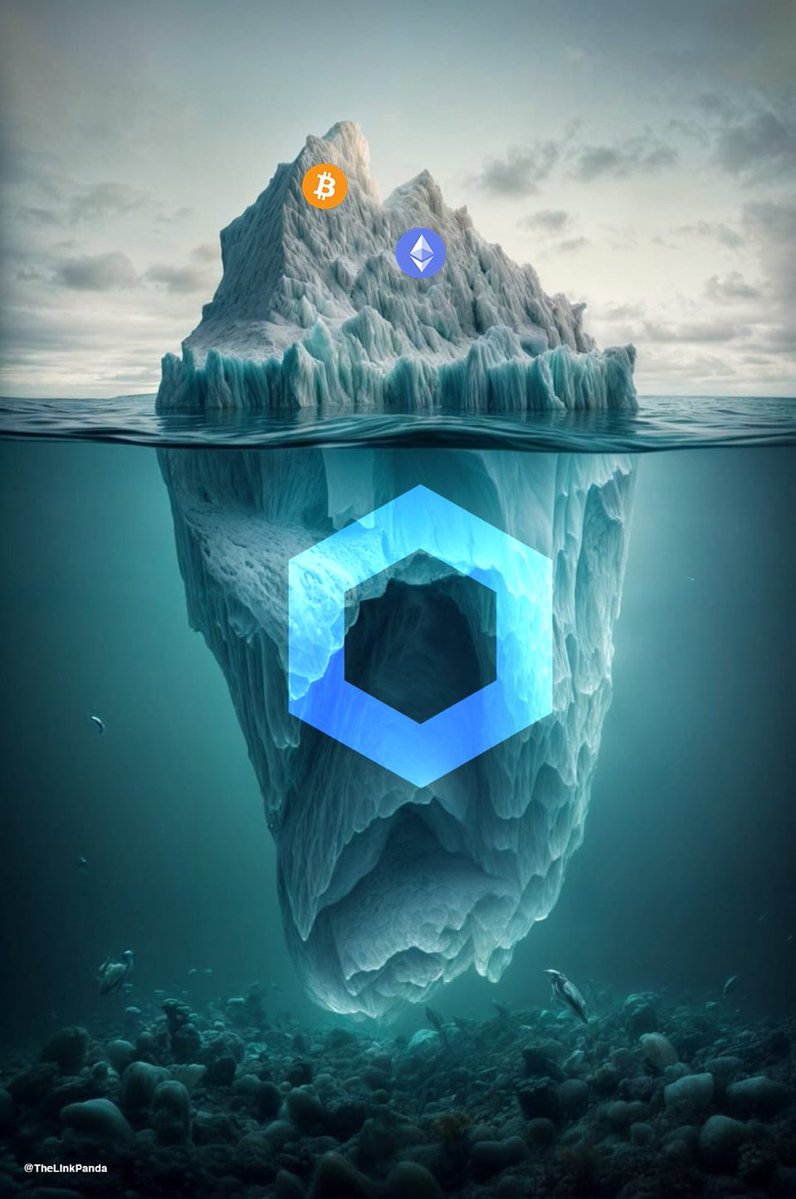Chainlink-Preis
in EUR

Über Chainlink

Haftungsausschluss
OKX gibt keine Investitions- oder Vermögensempfehlungen. Du solltest sorgfältig prüfen, ob der Handel oder das Halten digitaler Assets angesichts deiner finanziellen Situation für dich geeignet ist. Bei Fragen zu deiner individuellen Situation wende dich bitte an deinen Rechts-/Steuer- oder Anlagenexperten. Weitere Einzelheiten findest du in unseren Nutzungsbedingungen und der Risikowarnung. Durch die Nutzung der Website eines Drittanbieters („TPW“) akzeptierst du, dass jegliche Nutzung der TPW den Bedingungen der TPW unterliegt. Sofern nicht ausdrücklich schriftlich angegeben, steht OKX einschließlich seiner verbundenen Unternehmen („OKX“) in keinerlei Verbindung zum Eigentümer oder Betreiber der TPW. Du stimmst zu, dass OKX nicht für Verluste, Schäden oder sonstige Folgen haftet, die sich aus deiner Nutzung der TPW ergeben. Bitte beachte, dass die Nutzung einer TPW zu einem Verlust oder einer Minderung deiner Assets führen kann. Das Produkt ist möglicherweise nicht in allen Ländern verfügbar.
Preisentwicklung von Chainlink
Chainlink auf Social Media
Anleitungen

Erstelle ein kostenloses OKX-Konto.
Zahle Gelder auf dein Konto ein.
Wähle deine Krypto aus.
Häufig gestellte Fragen zum Chainlink-Preis
Tauch tiefer ein in Chainlink
Chainlink ist ein dezentralisiertes Oracle-Netzwerk, dasBlockchain-basierte Smart Contractsfür den Zugriff auf zuverlässige Daten aus der realen Welt, die außerhalb der Chain gespeichert sind. Dafür belohnt Chainlink Datenanbieter, die als Orakel bekannt sind, für die Bereitstellung von genauen und wertvollen Daten im Austausch fürChainlinks native ERC-20-Kryptowährung, LINK.
Chainlink umfasst fast 1000 unabhängige dezentralisierte Orakelnetzwerke, die Krypto-Marktdaten, Devisenkurse, Indizes, Wetterdaten, Sportstatistiken, Wahlergebnisse, Fluginformationen und andere Informationen für Smart Contracts auf über 12 Blockchain-Netzwerken bereitstellen.Arbitrum,Avalanche,Ethereum,Fantom,HarmonyundPolygongehören zu den von Chainlink unterstützten Blockchains.
Um ein Oracle im Chainlink-Ökosystem zu werden, müssen Datenanbieter zunächst eine vorab festgelegte Anzahl von LINK-Token staken, um die Integrität des Netzwerks aufrechtzuerhalten. Wenn festgestellt wird, dass Datenanbieter an der Gefährdung der Lebensfähigkeit des Netzwerks beteiligt sind, wird Chainlink seine Stakes reduzieren.
Neben der Bereitstellung dezentraler Daten bietet Chainlink verschiedene Dienste an, wie verifizierbare zufällige Funktionen (VRF), Keepers,Proof of Reserve (PoR), und Cross-Chain Interoperability Protocol (CCIP). Das Off-Chain Reporting (OCR) des Netzwerks ermöglicht es den Knoten außerdem, zehnmal mehr Daten für Smart Contracts bereitzustellen und gleichzeitig die Betriebskosten um 90 % zu senken.
Preis und Tokenomics von LINK
Das Angebot von Chainlink ist auf 1 Milliarde LINK-Token begrenzt. Anleger(innen) erhielten 35 % des Gesamtangebots, während Knotenbetreiber(innen) und Ökosystem-Prämien 35 % erhielten. Die Muttergesellschaft von Chainlink, SmartContract.com, erhielt 30 % des LINK-Angebots. LINK-Token kommen in Umlauf, wenn Knotenbetreiber(innen) LINK als Prämie erhalten, Anleger(innen), die LINK halten oder Projekte, die LINK als Erwerb oder Verkauf auf dem freien Markt erhalten.
Über die Gründer
Chainlink wurde 2017 von Sergey Nazarov und dem Softwareentwickler Steve Ellis gegründet. Vor der Einführung von Chainlink arbeitete Nasarov an mehreren Projekten, die sich auf die Peer-to-Peer-Technologie konzentrierten. Er gründete 2009 ExistLocal, einen Peer-to-Peer-Marktplatz für Tourismus. Er war maßgeblich an der Einführung von CryptaMail beteiligt, einem vollständig dezentralen Mail-Service, fünf Jahre später. Nazarov arbeitete auch mit Steve Ellis zusammen, um 2014 zwei weitere Unternehmen wie SmartContract.com zu starten.
Zu den technischen Beratern von Chainlink gehören prominente Personen innerhalb und außerhalb der Blockchain-Branche. Eric Schmidt, ehemaliger Chairman und CEO von Google, Jeff Weiner, CEO von LinkedIn, und Tom Gonser, Mitbegründer von DocuSign, gehören zu denen auf dieser Liste. Laut Crunchbase hat Chainlink 32 Mio. USD von Investoren wie Fundamental Labs, Andreas Schwartz und Nirvana Capital eingesammelt.
Highlights für Chainlink
Chainlink integriert Wetterdaten aus Google Cloud
Seit 2019 arbeiten Google Cloud und Chainlink zusammen, damit Chainlink Google-Cloud-Daten integrieren kann. Chainlink verfügt nun über vollständig integrierte dezentrale Wetterdaten aus der Google-Cloud im Jahr 2021. Die Integration von Google Chainlink verwendet einen Orakelknoten, der kontinuierlich Daten aus der Außenwelt in das Chainlink-Netzwerk sendet. Diese Daten werden dann kombiniert und in aggregierter Form für Blockchain-Anwendungen zugänglich gemacht.
Chainlink-Partnerinnen und -Partner: CDRIS und UNICEF
Chainlink hat sich im Januar 2021 mit UNESCO zusammengetan, um das Bewusstsein für die Blockchain-Technologie zu schärfen und vielversprechende Beitragsleistende zu unterstützen. Nach ein paar Monaten kündigte Chainlink eine Partnerschaft mit UNICEF an, um Blockchain-Anwendungen in Entwicklungsprogrammen zu finanzieren.
Chainlink 2.0
Das Chainlink-Team hat Pläne zur Optimierung des Protokolls im April 2021 über das Chainlink 2.0-Whitepaper bekannt gegeben. Laut dem Whitepaper wird sich die nächste Aktualisierung darauf konzentrieren, ein „trustless und dezentralisierteres System für die Ausführung des Chainlink-Protokolls zu ermöglichen. Eine Komponente dieser Strategie verlangt vor allem die Einrichtung eines Staking-gestützten Anreizmechanismus. Infolgedessen kann Chainlink sicherstellen, dass böswillige Knotenbetreiber bestraft werden, während ehrliche Datenanbieter durch die Implementierung einer von LINK gesteuerten Staking-Wirtschaft belohnt werden.
Im Juni 2022, mehr als ein Jahr nach der Veröffentlichung dieser Veröffentlichung, gab Chainlink bekannt, dass Chainlink 2.0 es den LINK-Inhaberinnen und -Inhaber ermöglichen würde, ihren Einsatz zu delegieren, um mehr Personen am Validierungsprozess des Protokolls zu beteiligen. Darüber hinaus wird zum Upgrade ein erweitertes Reputationstracking-System gehören, das Leistungsmetriken für jeden Knotenbetreiber generieren wird.
ESG-Offenlegung






